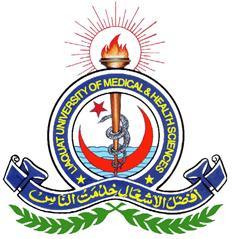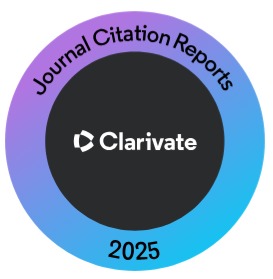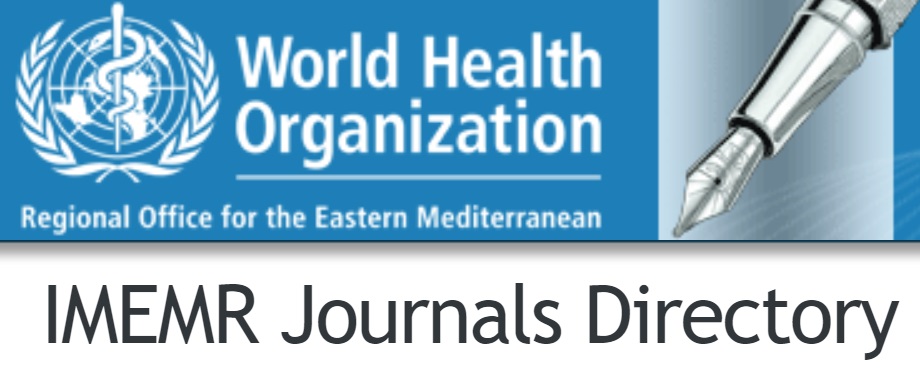12-Leads Electrocardiogram Interpretation Competency among Nurses working in Critical Care Areas at Dow University Hospital, Karachi
Keywords:
Nurse, Interpretation, competency level, Electrocardiogram, Tertiary care hospitalAbstract
OBJECTIVE: To assess the 12-lead Electrocardiograph (ECG) interpretation competency level of nurses working in the critical care units of Dow University Hospital, Karachi.
METHODOLOGY: The descriptive cross-sectional design study was conducted from October to December 2019. The purposive sampling technique was used to include the participants. The study sample constitutes 120 registered nurses from the critical care units of Dow University Hospital (DUH), including the intensive care unit (ICU), coronary care unit (CCU), and emergency department(ED). Full-time Registered nurses with more than one year of professional experience and currently working in critical care units of Dow University Hospital were included, and those with post-basic-cardiology specialization were excluded. Data were collected through a 12-item validated study questionnaire and analyzed through descriptive statistics using SPSS version 21.0.
RESULTS: Most of the participants, 84 (70.0%) in this study, were male, and 46(38.3%) of the nurses have completed Post RN-BS Nursing (post-diploma two years undergraduate nursing degree program) as the highest professional qualification. This study determined ECG interpretation competence as a score of ? 9 out of 12. The findings of this study revealed that 38(31.66%) nurses scored ? 9, whereas 82 (69.34%) nurses scored eight or less.
CONCLUSION: The study found that most nurses performing their duties in critical hospital areas have suboptimal ECG interpretation competency levels. A relatively higher level of competency was found among nurses working in CCU.
References
Lopez EO, Ballard BD, Jan A. Cardiovascular disease. InStatPearls [Internet] 2021 Aug 11. StatPearls Publishing.
Barolia R, Sayani AH. Risk factors of cardiovascular disease and its recommendations in Pakistani context. J Pak Med Assoc. 2017; 67(11): 1723-9.
Organization WH. WHO Global Coordination Mechanism on the Prevention and Control of non-communicable diseases: final report: WHO GCM/NCD working group on the alignment of international cooperation with national NCD plans (Working Group 3.2, 2016–2017). World Health Org. 2018; Available from: https://apps.who.int/iris/handle/10665/312273.
Jafar TH, Haaland BA, Rahman A, Razzak JA, Bilger M, Naghavi M et al. Non-communicable diseases and injuries in Pakistan: strategic priorities. Lancet. 2013; 381(9885): 2281-90. doi: 10.1016/S0140-6736(13)60646-7. Epub 2013 May 17.
Hutchisson B, Cossey S, Wheeler RM. Basic electrocardiogram interpretation for perioperative nurses. AORN J. 2003; 78(4): 571-90 , 585-90; quiz 591-4. doi: 10.1016/s0001-2092 (06)60665-0.
de Abreu WO, dos Santos Araújo J, dos Santos JS, da Silva JLLJR. Society, Development Cuidados de enfermagem aos pacientes com arritmias. 2022; 11(9): e56411932152-e.
Stephens KE, Anderson H, Carey MG, Pelter MM. Interpreting 12-lead electrocardiograms for acute ST-elevation myocardial infarction: what nurses know. J Cardiovasc Nursing. 2007; 22(3): 186-93; quiz 194-5. doi: 10.1097/01.JCN.0000267822. 81707.c6.
Stewart AJ, Lowe MD. Knowledge and attitude of nurses on medical wards to defibrillation. J R Coll Physicians of Lond. 1994; 28(5):399-401.
Coll-Badell M, Jiménez-Herrera MF, Llaurado-Serra M. Emergency nurse competence in electrocardiographic interpretation in Spain: a cross-sectional study. J Emerg Nurs. 2017; 43(6): 560-70. doi: 10.1016/j.jen.2017.06.001. Epub 2017 Jun 30.
Sibley A, MacLeod MH, Patocka C, Yu J, Stryhn H, Jain T. What Adult Electrocardiogram (ECG) Diagnoses or Findings are Most Important for Advanced Care Paramedics to Know? Cureus. 2021; 13(7) ): e16260. doi: 10.7759/cureus.16260.
Ismail AL, Younis GA, Ahmed SES. Effect of Implementing Educational Program about Electrocardiography Interpretation on Internship Nursing Students' Performance at Intensive Care Units. Int J Novel Res Healthcare Nurs. 2020; 7(1): 361-374.
Panduragan MH, Raja A, Balasubramanian N. A cross-sectional survey to assess the level of skill on ECG and its interpretation among nursing students. IDC Int J. 2020; 7(4): 61-66 (Online). doi: 10.47211/idcij.2020.v07i04.013.
Tavan H, Norouzi S, Shohani M. Teaching cardiac arrhythmias using educational videos and simulator software in nurses: An educational interventional study. Shiraz E-Medical J. 2020; 21(9): e97984. doi: 10.5812/semj.97984.
Agashe N, Ramesh A, Narayane M, Mankar V, Chiwane A. A Quasi-Experimental Study To Assess The Effectiveness Of Lecture Method Versus Information Booklet On Interpretation Of Electrocardiogram Among Staff Nurses Working In Selected Hospital. Eur J Mol Clin Med. 2021; 8(1): 255-66.
Ruhwanya DI, Tarimo EA, Ndile M. Life-threatening arrhythmias: Knowledge and skills among nurses working in critical care settings at Muhimbili National Hospital, Dar es Salaam, Tanzania. Tanzania J Health Res. 2018; 20(2): 1-10.
Giannetta N, Campagna G, Di Muzio F, Di Simone E, Dionisi S, Di Muzio M. Accuracy and knowledge in 12-lead ECG placement among nursing students and nurses: A web-based Italian study. Acta Bio Med. 2020; 91(12-S): e2020004. doi: 10.23750/abm.v91i12-S.10349.
Prihatiningsih D, Hutton A. Electrocardiogram interpretation skills among healthcare professional and related factors: A Review on Myocardial Infraction cases. J Health Technol Assess Midwifery 2018: 1(2): 87-93. doi: 10.31101./jhtam. 796.
Chen Y, Nasrawi D, Massey D, Johnston AN, Keller K, Kunst E. Final-year nursing students' foundational knowledge and self-assessed confidence in interpreting cardiac arrhythmias: A cross-sectional study. Nurse Educ Today. 2021; 97: 104699. doi: 10.1016/j.nedt.2020. 104699. Epub 2020 Dec 5.
Rahimpour M, Shahbazi S, Ghafourifard M, Gilani N, Breen C. Electrocardiogram interpretation competency among emergency nurses and emergency medical service (EMS) personnel: A cross-sectional and comparative descriptive study. Nursing Open. 2021; 8(4): 1712-19. doi: 10.1002/nop2.809.
Turner JL, Lyons A, Shah RU, Zenger B, Hess R, Steinberg BA. Accuracy of patient identification of electrocardiogram-verified atrial arrhythmias. JAMA Netw Open. 2020; 3(5): e205431: 1-4. doi: 10.1001/jamanetworkopen.2020.5431.
Qaddumi JA, Almahmoud OM, Alamri MS, Maniago JD. Competency In Electrocardiogram Interpretation Among Registered Nurses In Private And Government Hospitals in Nablus, Palestine. Majmaah J Health Sci. 2020; 8(1): 70. doi: 10.5455/mjhs.2019.03.008.
Tahboub OY, Dal Yilmaz U. Nurses' knowledge and practices of electrocardiogram interpretation. Int Cardiovasc Res J. 2019; 13(3): 80-84.
Downloads
Published
How to Cite
Issue
Section
License
Copyright (c) 2023 Journal of Liaquat University of Medical & Health Sciences

This work is licensed under a Creative Commons Attribution-NonCommercial-ShareAlike 4.0 International License.
Submission of a manuscript to the journal implies that all authors have read and agreed to the content of the undertaking form or the Terms and Conditions.
When an article is accepted for publication, the author(s) retain the copyright and are required to grant the publisher the right of first publication and other non-exclusive publishing rights to JLUMHS.
Articles published in the Journal of Liaquat University of Medical & health sciences are open access articles under a Creative Commons Attribution-Noncommercial - Share Alike 4.0 License. This license permits use, distribution and reproduction in any medium; provided the original work is properly cited and initial publication in this journal. This is in accordance with the BOAI definition of open access. In addition to that users are allowed to remix, tweak and build upon the work non-commercially as long as appropriate credit is given and the new creations are licensed under the identical terms. Or, in certain cases it can be stated that all articles and content there in are published under creative commons license unless stated otherwise.























